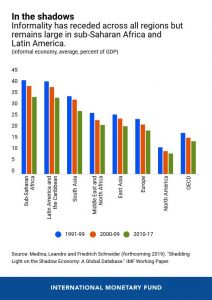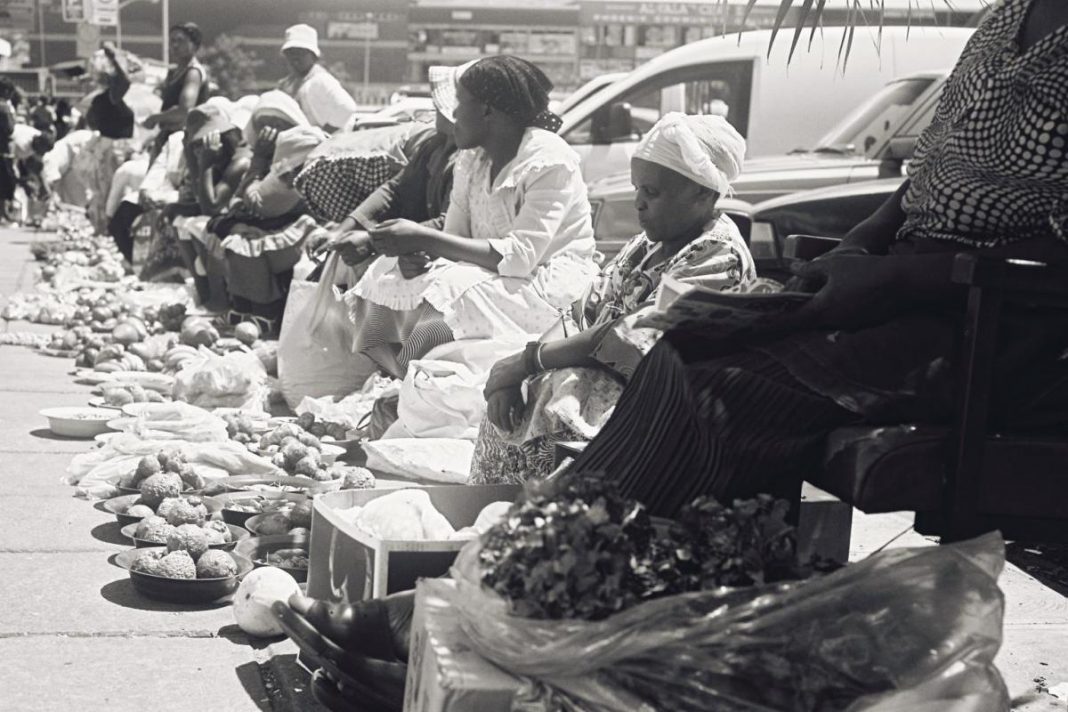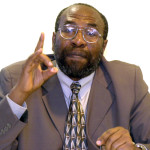By Thomas F. Alexander
The informal economy, which is economic activity that falls outside the regulated economy and tax system, such as street vending or unregistered taxi drivers, is hard to measure.
People and companies engaged in the informal economy usually operate on a small scale. This means there are no official statistics on the informal or shadow economy, as it’s sometimes called, so economists need to estimate its size. Some common techniques include surveys or indirect indicators such as the demand for currency.
Our chart of the week, based on an updated version of earlier IMF research, shows that the size of the informal economy—measured as a share of GDP—has fallen gradually across all regions. While reforms to reduce informality, such as reducing the hurdles to registering a business, are working, the shift from informal to formal takes time.

The regions with the highest share of informality during 2010–17 are sub-Saharan Africa and Latin America and the Caribbean—both at 34 percent of GDP. This compares with 9 percent of GDP for North America. In the Organisation for Economic Co-operation and Development, the informal sector is equivalent to nearly 15 percent of GDP.
The informal economy is generally associated with low productivity, poverty, high unemployment, and slower economic growth. It is also more prevalent in low-income countries because as countries develop, the easier it is for workers to transition to the formal sector. At the same time, it provides employment and income to people who would otherwise not find employment, or it supplements their income from employment in the formal, regulated sector.
The challenge for policymakers is to create an environment where the formal sector can thrive while creating opportunities for people working in the informal sector to maintain or improve their living standards. Some of these measures include reducing the costs of doing business, tackling corruption, and improving access to finance and services.
This year’s topic of the seventh IMF Statistical Forum—Measuring the Informal Economy—will review the definition of “informal” and explore new technologies, such as using night lights from satellite images, to capture the true size of the informal economy. This will help policymakers better address the challenges of persistent informality.







